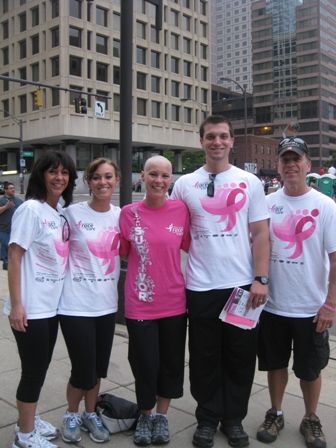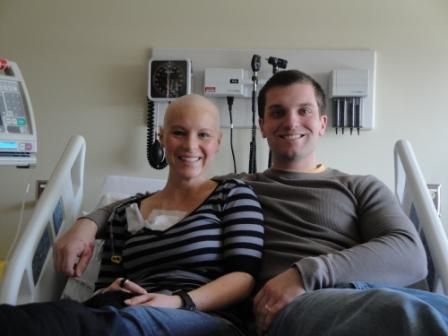Article
Listen to Your Body
Author(s):
"(My doctors) literally told me, 'Lindsay, you can't keep coming back here. You're only 27, this isn't cancer. It's nothing to worry about.'"
Too young to date, too young to wear make-up, too young to dress like that, too young to get married, too young to see an R-rated movie; any of those ring a bell?
Now let's say you were told you were too young for cancer. Lindsay Giannobile says you're never too young for anything in the world of cancer; anything is possible.

She is proof of that. Her long road to becoming a mom with metastatic breast cancer wasn't her only struggle with the disease. In fact, she had struggles even before her initial diagnosis.
READ MORE: Surrogacy: Becoming a Parent After Cancer
In 2009, after completing a half marathon, Lindsay discovered a lump in her breast during a self-exam. "It was exactly what they say breast cancer feels like; a small hard rock," she says.
Lindsay immediately went to get it looked at, and a "quick ultrasound" was performed. The doctor told her it was nothing and, at 27, she was too young and active for breast cancer. About 5% of breast cancers are diagnosed in women younger than 40, but just because something is rare, doesn't mean it's impossible.
Lindsay was told to come back if anything changes. She wasn't satisfied, but kept an eye on it. Four months later, Lindsay discovers another lump in the same breast, and went back to the same facility to be examined again.

She told the doctor, "I don't feel right about this." Again, only an ultrasound was performed. No mammogram, no biopsy.
"They literally told me, 'Lindsay, you can't keep coming back here. You're only 27, this isn't cancer. It's nothing to worry about'," Lindsay says. They told her to come back in a year if the lumps were still there.
"I felt like I did everything I could do, since I had the lumps checked out twice in a few months. I thought 'If a doctor is telling me nothing, clearly it's nothing and I'm overreacting.' At the time, I didn't think to go get a second opinion, and I really wish I had," she says.
Yes, women can get non-cancerous lumps, but a biopsy is the only way to rule out that a lump is cancerous. Steven Sugarman, a medical breast oncologist at Memorial Sloan-Kettering Cancer Center in New York, who was not involved in Lindsay's care, encourages patients to seek a second opinion if they feel their physician isn't taking their concerns seriously.
It's also important to look at "reputable sources" for information and advice, he says. It wasn't until a year later that Lindsay and her husband, Tony, decided to get a second opinion. This time, Lindsay went to the James Cancer Hospital at The Ohio State University Medical Center.
Within a week, ultrasounds, biopsies and mammograms were performed.
"We got a pathology report that had cancer written all over it," Lindsay says.
Lindsay had stage 3 HER2-positive breast cancer, and within a year, the cancer spread to her bones. Even if you're not a health care professional, it's perfectly normal to question a doctor. Lindsay has learned that since you know your body better than anyone, it's important to fight for yourself.
"Be your own advocate," she says. That doesn't mean that anything unusual is automatically cancer. It may be something else, or it may in fact be nothing -something people who have successfully been treated for cancer must frequently consider.
When every little ache or cough brings up a fear of recurrence, the physician should respond to each worry with understanding.
"The role of the oncologist in caring for a very concerned patient is to listen carefully to the patient's complaint and order the appropriate tests to determine if the problem is a significant one that requires a specific treatment," says Sugarman. "If the complaint turns out, after full evaluation, not to be serious, then the physician should prescribe the best plan, give the patient instructions on what changes to look for that would require further investigation, and provide words of reassurance and comfort to the patient."



